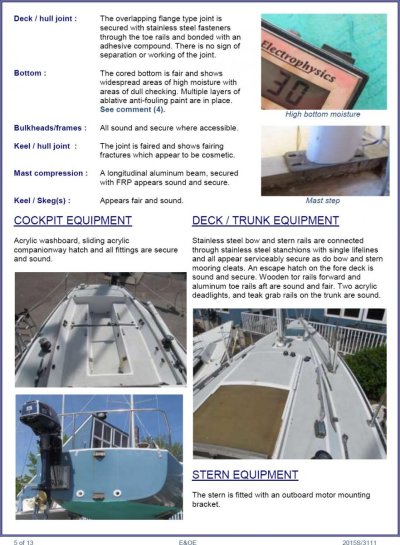BruceK
Moderator Emeritus
- Joined
- Oct 31, 2011
- Messages
- 13,347
- Vessel Name
- Sojourn
- Vessel Make
- Integrity 386
This arises because I`m considering a Beneteau ST42 which has a cored hull incl below waterline. According to a boat test video taken at the Beneteau factory, all Beneteau`s are built that way, the core is balsa, the balsa is saturated with resin during the build.
I`d probably not question above waterline coring. But,Beneteau build a lot of boats,all done this way,over many years.
I`d expect known negative experiences if it is a problem. I found comments online like "I`d never buy a cored hull",but nothing specific.
Contributions about experiences or knowledge would be much appreciated.
I`d probably not question above waterline coring. But,Beneteau build a lot of boats,all done this way,over many years.
I`d expect known negative experiences if it is a problem. I found comments online like "I`d never buy a cored hull",but nothing specific.
Contributions about experiences or knowledge would be much appreciated.
Last edited:



